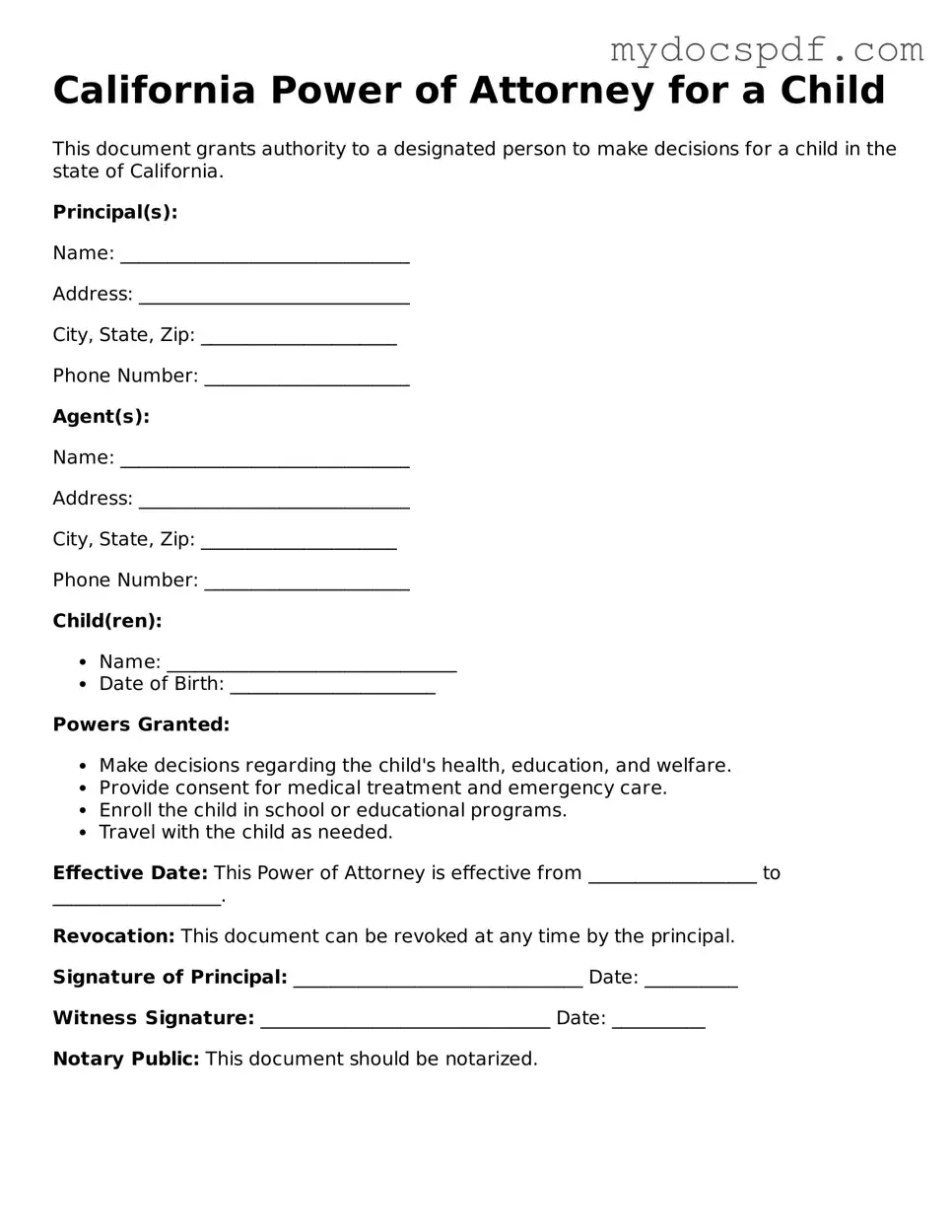Fillable California Power of Attorney for a Child Document
The California Power of Attorney for a Child form is a legal document that allows a parent or guardian to grant another adult the authority to make decisions on behalf of their child. This arrangement can be crucial in situations where the parent is temporarily unable to care for the child, such as during travel or medical emergencies. Understanding the nuances of this form can empower families to ensure their child's well-being in various circumstances.
Access Editor Here
